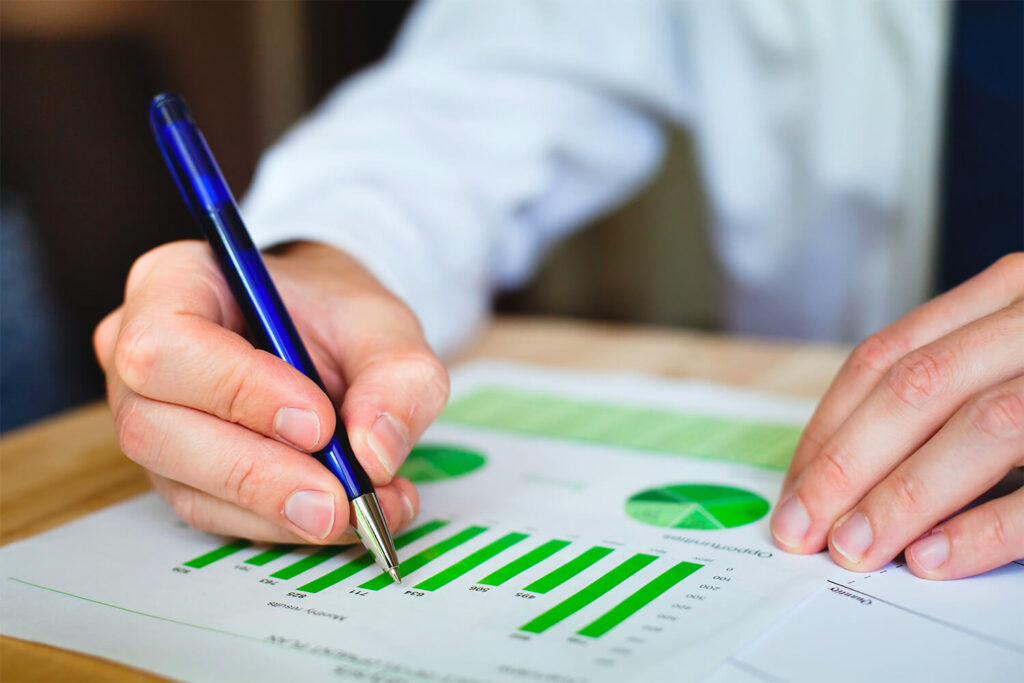ESG-report
ESG-report
What is ESG reporting? The abbreviation “ESG” is mainly used in the financial world and stands for “Environmental, Social, Governance”. These include, for example, CO2 emissions, exploitation, tax evasion and corruption. Matters that affect the society in which you operate as a company, but which are not reflected in the annual financial figures. An ESG report usually deals with “non-financial” data. Reports on sub-areas such as CO2, circular economy, safety or child labor can be part of this.
Certification
The EU is now imposing strict requirements on companies in the field of ESG. Certifications such as BREEAM, WELL, LEED and DGNB give companies the means to implement and thus comply with ESG reports or EU taxonomy reports. Certification is no longer a goal in itself, but a tool to comply with legislation.
Realizing or transforming sustainable real estate is more important than ever since the European Union wants to put sustainability higher on the agenda of organizations. The Sustainable Financial Disclosure Regulation (SFDR) has been developed for this purpose. The SFDR is a European regulation that aims to provide more transparency on how financial market participants or financial advisors deal with sustainability risks and opportunities in their investment decisions. The taxonomy defines interdependencies, including the data, definition, and requirements that apply to them.


SFDR
During the climate conference in Paris it was agreed that the European Union wants to exert more influence on companies in order to achieve a higher percentage of sustainable and ecological investments. The SFDR was born from this idea, with the main objective of reorienting capital flows towards a sustainable economy and curbing greenwashing. This also includes promoting transparency, encouraging long-term thinking and having sustainability as an integral part of risk management. The SFDR has been applied in the financial sector since 2020. Since then, financial market participants have been required to report annually in ESG reports on their investments and on their policies regarding the integration of sustainability risks in their investments and decision-making process.
Taxonomy Regulation
In addition to the SFDR, the taxonomy regulation was drawn up in 2020. It soon became clear that environmentally sustainable investing could be interpreted broadly by organisations. As a result, the effect of the SFDR lagged behind and it was necessary to draw up more frameworks. Taxonomy is a science-based classification system with technical selection criteria that is expected to become the global standard for assessing the sustainability of real estate investments. The purpose of the taxonomy is to give sustainability more weight in investments.
Taxonomy aligned
The assessment of the extent to which an economic activity is ecologically sustainable is based on the six environmental objectives. These six objectives are climate mitigation (reducing greenhouse gas emissions), pollution prevention, sustainable use of water and maritime resources, climate adaptation, transition to a circular economy and protection of ecosystems. At the same time, an economic activity should not significantly affect other environmental objectives. When these criteria are met, the activity can be labeled as light or dark green or as taxonomy aligned, which means that an organization invests in demonstrably environmentally sustainable investments.
Corporate Sustainability Reporting Directive
Providers of investment products, for example, must report the percentage of green investments* in their annual ESG reporting in order to test whether organizations are investing more in an environmentally sustainable manner. For the time being, the SFDR and the taxonomy regulation only apply to companies that are active in the financial sector. However, the European Union can achieve its environmental objectives as quickly as possible. That is why within a few years the non-financial sector will also be involved in SFDR and the taxonomy regulation via the Corporate Sustainability Reporting Directive (CSRD). It is therefore important for all organizations to regularly reflect on the sustainability of their investments.


Future proof
At Adamasgroup we see an increasing demand from organizations to make real estate more sustainable, as this is necessary for their future-proofing. If an organization does not comply with the guidelines, this can be detrimental to the survival of the organization in the long term. Adamasgroup assists organizations in making their real estate more sustainable, in order to guarantee that they are ready for the future.
Green investments
From 2022, the real estate sector must demonstrate that their investments are green, if funds are used from, for example, pension funds or other financing is used. As a result, sustainable construction is no longer an extra-statutory framework, but an obligation that is checked by the accountants in their annual reports.
*Which meets the definition of “green” as defined in the SFDR

